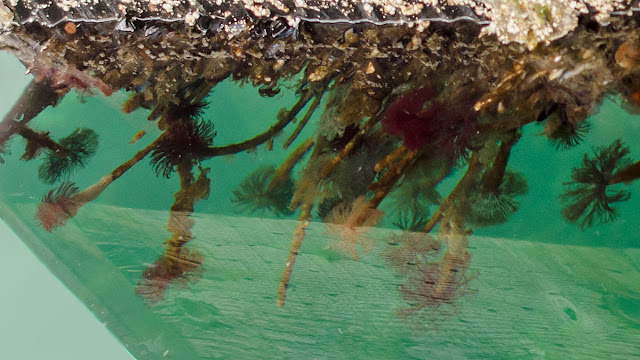I checked the tide tables for Campbell River. Not promising. All the low tides this month and the next fall in the middle of the night. And therefore all those glorious, teeming creatures and seaweeds are out of reach and invisible for the time being.
So I went down to
Discovery Harbour Marina. There, the critters rise with the tide; some of them are visible, if not reachable. And there I found anemones, herring, starfish, sponges, spiders (not sea critters, of course, but they're everywhere) and more. Even a hunting seal! (But a whale went by, and I was too low down to see it. Next time, maybe.)
Here's the seal.
 |
| Swimming in the shade between the first wharf and the rip rap. |
I got just this short glimpse of him before he ducked back underwater. Ten minutes later, walking back to the ramp, I saw him again. This time, he had a mouthful:
 |
| Supper is served; fresh salmon steak, and the head, too! |
He dove, came up again, gulping salmon in big bites, wolfing it down as a dog does. He went down again, and the ripples faded. I waited a while, but he had gone, taking his leftovers with him. A gull swooped low overhead, but there were no scraps to be found, and he left. So did I.
I'll be processing the rest of the photos for a few days. Herring tomorrow, I think.































